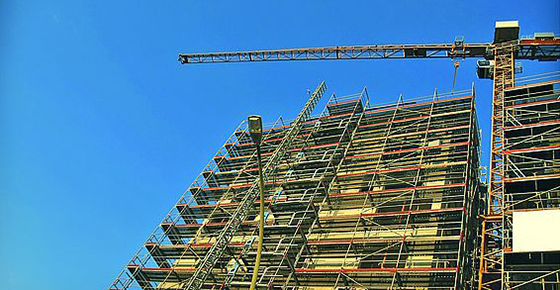
Our task is to reduce the naturally high risk of accidents and health hazards on your construction site to the best of our ability and to optimise site safety by drawing up a safety and health plan, by planning and organising before the construction project is carried out and by carrying out regular site inspections.
And if ,nevertheless, problems do arise, our employees are available at all times of the day. We provide you with competent support and are on site immediately in the event of problems and coordinate the work processes of your employees. Our commitment helps you to establish and maintain the site safety of your facility for the smooth running of your project.
With the expert team of THURM HSE you have a reliable partner who will competently assist you with your construction project. Our responsibility in occupational safety gives you security in your construction projects.
Not only for construction site visitors, children or construction workers do construction sites harbour many potential dangers; safety aspects should therefore never be neglected by construction site operators and builders. If the duties to protect were observed regularly and to the desired extent, the considerable number of property damage and personal injuries caused by a lack of construction site safety would certainly be lower. There are many reasons for accidents on construction sites, most of which could have been regularly avoided. Parts lying around quickly become dangerous tripping hazards, construction site workers do not wear protective helmets, necessary barriers are missing or dismantled, scaffolding or stairs are only provisionally attached, these are just some of the many reasons for avoidable accidents on construction sites.
The construction site environment is dynamic and accurate compliance with controls and safety regulations is not always easy. Nevertheless, safety must always come first on any construction site and thus be a top priority for all those responsible. Safety on construction sites is therefore an ongoing challenge. But it is not only construction workers and construction companies who are responsible; safety on construction sites is everyone's business. Planners, owners and builders should also deal with the issue at an early stage and consistently implement the safety requirements from the very beginning.
The high safety requirements apply not only to the construction of the building, but always also to the execution of maintenance or cleaning work on the construction site. In order to avoid minor and major accidents, all those involved must therefore pull together and exercise the necessary caution for the sake of construction site safety. The safety requirements on construction sites are regulated by a large number of standards and recommendations. Protective measures should be contractually regulated. In order to contractually represent suitable measures for more work safety, catwalks, fall protection or scaffolding, for example, can also be the subject of the contract. In principle, every visitor to a construction site is considered a safety risk. After all, there are certain safety risks in a construction site area, and even the best construction site safety can never completely exclude residual risks, but it can minimise them as far as possible.
This safety process already starts with the fact that construction site visitors prepare themselves accordingly before entering the construction site. This is because construction site visitors are usually not familiar with the on-site conditions and therefore cannot assess the specific hazards or can only do so inaccurately without sufficient information. The safety equipment on a construction site does not come close to that of an already completed object. The minimum equipment when entering a construction site always includes a safety helmet and suitable footwear. The builder and contractor must also agree at an early stage which liability insurance will cover any accidents suffered by visitors to the construction site. A builder-owner therefore has comprehensive duties to protect. Qualified site managers, architects or specialist planners should be commissioned by the client as expert assistants. Already in the preliminary phase of project planning, architects must deal with questions concerning safety at a construction site. In addition, immediate action must be taken if elementary safety regulations are violated during construction.
The site manager is responsible for monitoring and coordinating the sequence of work processes, also from a safety point of view. The site manager, as the client's representative, has to advise a contractor of the necessary site safety measures. Ultimately, it is always the building owner himself who is responsible when it comes to safety on his construction site. He must therefore take into account his own knowledge and actions as well as those of his expert assistants in the event of an emergency. No one should treat safety on construction sites lightly, but in many cases there are unfortunately still relevant safety gaps, often due to ignorance or negligence. In addition, cost pressure unfortunately also leads to construction seemingly becoming more and more dangerous. Protective regulations are simply disregarded or not even carried out. However, safe construction and planning should always be a priority for all those involved, so that the common goal of preventing construction accidents altogether or at least reducing them as much as possible can be achieved. Safety should therefore never be sacrificed at the wrong end.